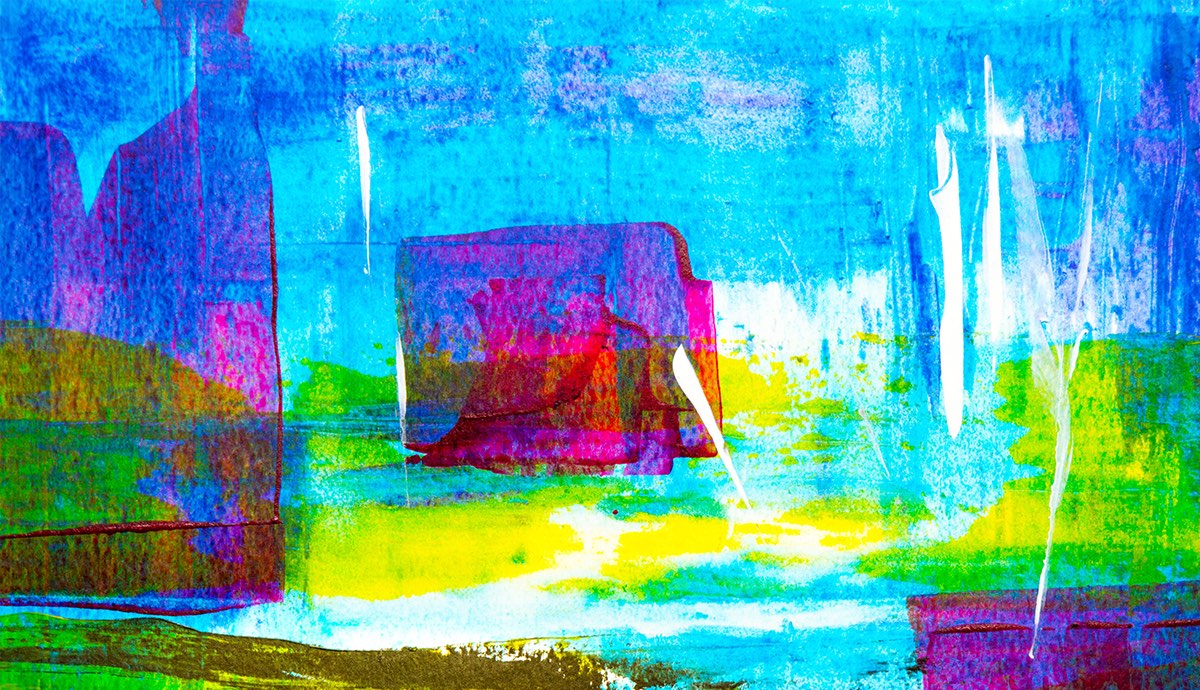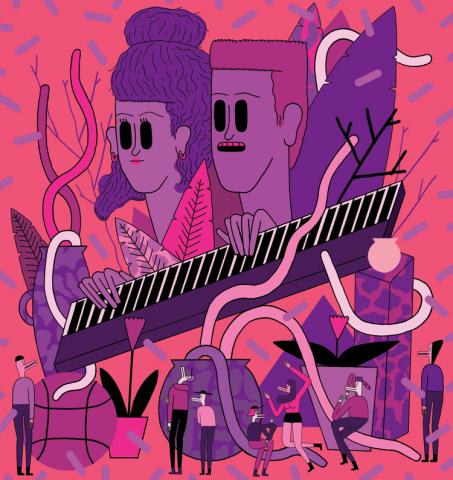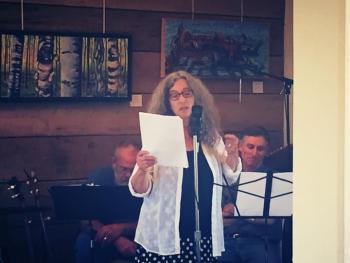Art doesn’t exist in a vacuum. It needs receptors and the more the better. As writers we are used to reading to each other and to other readers. That is our comfort zone, preaching to the choir. Step out of it. Kick your way out if need be.
Writers tend to overlook the visual, the auditory, the kinetic experience when considering readings.
When multi-media events happen, great energy is generated. New connections are formed. This kind of event stimulates the eyes, the ears, the brain and the heart and creates magic. And it creates new audiences. Laurie Anderson introduced many people to multi-media reading events that utilized poetry, music, theater and visual art. Slam poetry is one evolution from this and from rap contests.
I learned to combine poetry and music several years ago jamming with a jazz band, Po’Jazz, during the Vermont Postgraduate Workshop at VCFA. These musicians let me riff off them and were true partners in creation.
Artists hold openings where patrons flock to view their creations. Musicians perform to applause, to dancing, or to foot tapping. Dance, classical, opera tend to have their own audience. As artists we need to come together and collaboratively bring our work to each other and to the general public that may not even know they want or need art in their lives.
If you don’t have the opportunity to collaborate with other artists, you still can take your readings to unusual venues. Try taking poetry to a bar in South Texas. Or to workers on lunch break. Or to open mic events dominated by musicians.
One night in Texas I got up to read during open mic night at a shrimper bar. Uneasy filled the room as I plunged into my poems. I focused on the words and delivery. Within minutes I felt a shift. Afterwards several shrimpers told me that they hadn’t known that they liked poetry, that they had never heard it performed before and thanked me for bringing it to them.
At my most recent event, Carter Creek Band (Americana, roots music) played at an art opening in Northern Michigan. They were dubious at first how the performance would “fit” together. With a much larger pile of poems than I intended to read that night, I spontaneously picked a poem that began “this poem is not about a bird” following a roots song they had performed that ended with a line about a bird. They played several songs and waited until I jumped it and took over the mic for several poems whenever it fitted. A song with a ghost was followed by a poem filled with ghosts. It worked. It reached some of the audience that had come to hear music and hadn’t. Our first risk as writers is sitting down at the computer. Then we take risks sending out our stories and poems. We are descendants of an oral tradition that we should trust and take risks in the world of performance.





